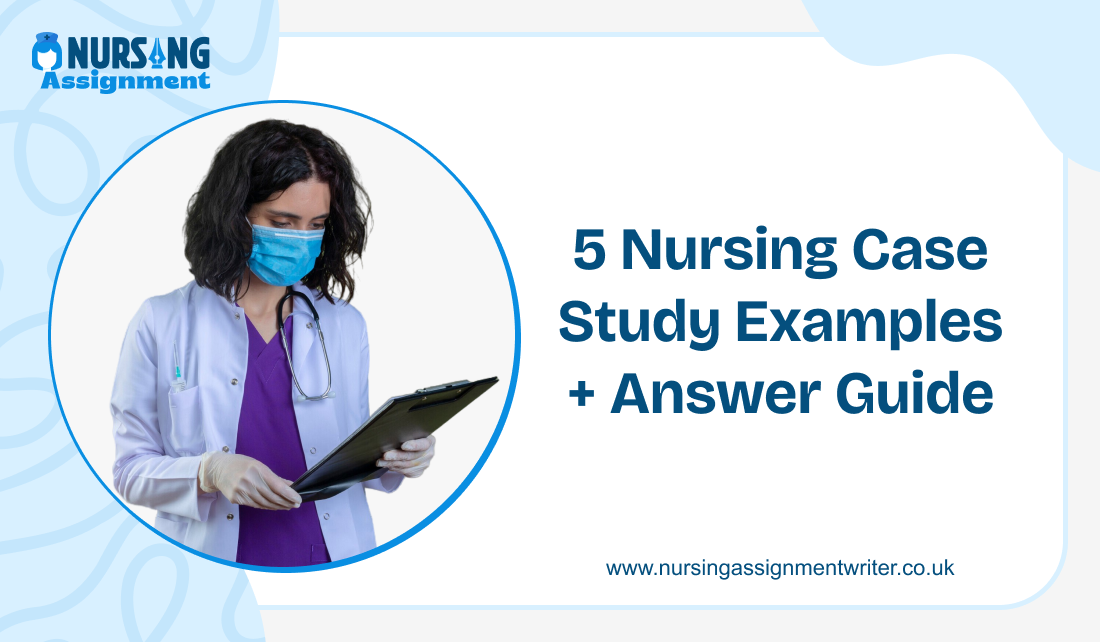
Nursing case studies are crucial for nursing education and practice. They support nurses in developing the ability to think critically and in applying their academic knowledge to real-world scenarios. Here, we present five nursing case study examples and demonstrate how to address and resolve issues.
Case Study 1: Acute Myocardial Infarction (AMI)
John is a man in his 58th year. His smoking habit was the cause of his hypertension attack. His current state of health is as follows: John can barely breathe, perspires profusely, and feels intense heart discomfort. In addition, he will have a stress test tomorrow, July 15, 2022, which yields a positive result despite his history of hypertension. John is now in need of an electrocardiogram (EKG) since he may be experiencing an acute myocardial infarction (AMI). The medical team has reported elevated cardiac enzymes and ST-segment elevation.
Questions and answer guide for case study
- What should be done first for John?
- Administer oxygen to improve breathing.
- Establish IV access for medication administration.
- Monitor vital signs continuously (pulse, blood pressure, temperature).
- Prepare for immediate medication administration (aspirin, nitroglycerin, morphine, and thrombolytics as prescribed).
- Ensure to perform an ECG to confirm AMI diagnosis.
- In this situation, what usual medications are given?
These will be aspirin, nitroglycerin, morphine, and thrombolytic.
- How should John be taught about lifestyle changes so he does not encounter any other cardiac problems in the future?
The main lessons should be on quitting smoking, eating a healthier diet, exercising regularly, and taking his medication as prescribed.
Case Study 2: Type 2 Diabetes Mellitus
A 45-year-old woman by the name of Mary is identified with type 2 diabetes. She has a bit of weight, stays inactive, and has relatives who have had diabetes. Her blood sugar in the morning while fasting is one hundred and eighty milligrams per deciliter.
Questions and answer guide for case study
- What are the primary nursing goals for Mary?
Normalizing blood sugar levels, promoting weight loss, and preventing complications are the main nursing priorities for Mary.
- What type of diet should the nurse suggest?
Recommend eating a variety of nutrients with controlled carbohydrate amounts, and focus on consuming fruits, vegetables, whole grains, lean proteins, and good fats.
- How might a nurse assist Mary in altering her lifestyle?
One way is to set achievable targets while giving her materials about exercise before following through, later on, to check how she is doing. Getting nursing assignment help can also offer thorough strategies and assistance for properly treating her condition.
Case Study 3: Disease of the Chronic Obstructive Pulmonary System (COPD)
George, a 67-year-old man, was admitted because of an exacerbation of COPD. He smokes despite his chronic bronchitis and emphysema. He had worsening dyspnea, a productive cough, and cyanosis upon admission
Questions and answer guide for case study
- What should a nurse do for George first?
Nursing priorities are to give George bronchodilators, corticosteroids, and oxygen therapy and monitor his respiratory status.
- What conditions must be met for someone with COPD to be discharged, and what steps should they take before discharge?
One needs to educate the patient on adherence to medication, how to use an inhaler, different breathing exercises, as well as recognizing signs of exacerbation.
- How will the nurse cope with George’s smoking habit?
To address smoking this may involve the provision of pointers for quitting smoking programs, counseling, and maybe even nicotine replacement therapy.
Case Study 4: Postoperative Care after Hip Replacement
The following is a scenario where Susan, a 72-year-old woman’s hip, has been replaced through surgery; therefore, she is currently experiencing pain and immobility and could also develop complications like DVT, which stands for Deep Vein Thrombosis, while still under care within the postoperative ward.
Questions and answer guide for case study
- What are the important things that nurses need to assess for Susan after her surgery?
Well, they need to keep a close eye on her vital signs, pain levels, the condition of the surgical site, and how well she’s able to move around. By incorporating a more conversational tone and using everyday language, we can make the information more accessible and relatable while still conveying the necessary details accurately.
- What can the nurse do to help control Susan’s pain?
The nurse can manage Susan’s pain effectively by administering the prescribed analgesics and using positioning for comfort and non-pharmacological methods, such as ice packs.
- What are some preventative tips to take to reduce the risk of DVT?
Deep vein thrombosis (DVT) is the formation of a blood clot in the deep veins of the body, usually in the legs. If the clot breaks and embolizes, it can travel to the lungs, causing a pulmonary embolism, which can be deadly. About 2–3 people out of 100,000 people die from pulmonary embolism each year. DVT preventive measures include encouraging early ambulation, administering anticoagulants as directed, and using compression devices.
Additionally, if you’re looking for support, consider seeking nursing case study help UK to enhance your understanding and approach.
Case Study 5: Pediatric Asthma
Scenario: Tommy is an 8-year-old male who has been brought to the clinic with a history of being an asthmatic patient. The boy often gets wheezing, coughing, and shortness of breath, especially at night and with exercise. The mother says that he has missed several school days because of the symptoms he is experiencing.
Questions and answer guide for case study
- What are the important components of Tommy’s asthma action plan?
Important components involve finding out the medicines to be used every day, the actions to be taken once the child has been attacked by asthma, and the situation that requires emergency attention.
- How would the nurse teach Tommy and his mother about the management of asthma?
The nurse should teach the child and his mother about the correct inhaler technique, early signs of an attack, and adherence to the drug regimen.
- What are the environmental considerations that need to be tackled to minimize the asthma triggers?
Advise patients to minimize their exposure to known allergens such as dust mites, animal dander, smoke, and pollutants to tackle many of the environmental considerations.
Conclusion
Nursing case studies are excellent tools for developing clinical skills and critical thinking. By working through each case methodically, focusing on patient prioritization, and delivering patient education, nurses can ensure holistic and efficient care. Use these case studies and tips as a guide for working through similar cases that you may encounter in your practice so that you can manage any clinical situation with confidence and skill.


